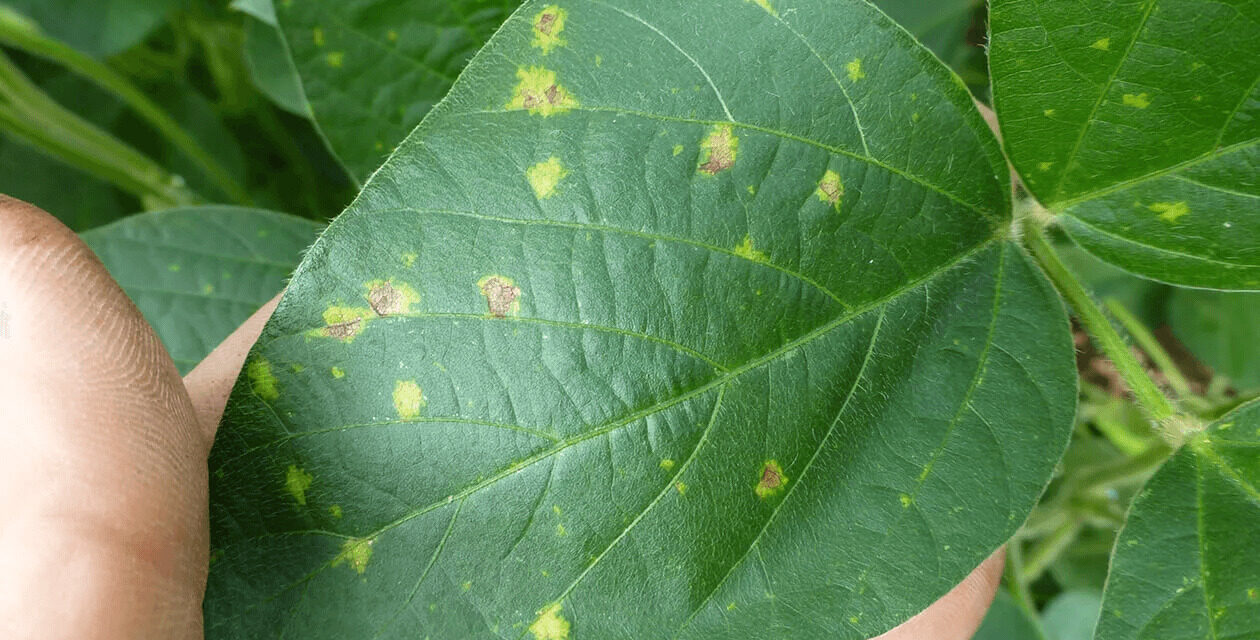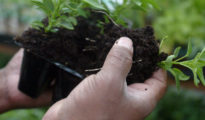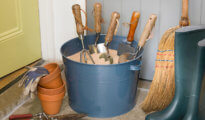Downy mildew is a common plant disease caused by the pathogen-like organisms known as Oomycetes. These organisms attack a wide range of plants, including vegetables, fruits, flowers, and trees. The disease is characterized by the formation of grayish-white, powdery spots on the leaves, stems, and flowers of infected plants. The spots can quickly spread, causing extensive damage and even death of the plant if not controlled. In this article, we will explore what downy mildew is, how to get rid of it, and how to control it.

What is Downy Mildew?
Downy mildew is a fungal-like disease caused by various species of Oomycetes. These organisms are not true fungi but are more closely related to algae and water molds. Downy mildew can infect a wide range of plants, including vegetables, fruits, flowers, and trees. Some of the most commonly affected plants include grapes, cucumbers, lettuce, spinach, and roses.
Symptoms of Downy Mildew
The symptoms of downy mildew vary depending on the plant species affected. However, in general, the disease is characterized by the formation of grayish-white, powdery spots on the leaves, stems, and flowers of infected plants. The spots may appear on both sides of the leaves or only on one side. They may also have a downy or velvety appearance, hence the name downy mildew. Other symptoms include stunted growth, wilting, and yellowing of leaves.
Causes of Downy Mildew
Downy mildew is caused by various species of Oomycetes, which thrive in warm, humid environments. These organisms can survive in soil, plant debris, and even water. They can also be carried by wind, rain, or insects from one plant to another. Once they infect a plant, they form structures called sporangia, which release spores that can quickly spread the disease to other plants.
Prevention of Downy Mildew
Prevention is always better than cure when it comes to downy mildew. Here are some measures you can take to prevent the disease from affecting your plants:
- Choose Resistant Plant Varieties
Choose plant varieties that are resistant to downy mildew. Many seed catalogs and nurseries offer varieties that have been bred to resist the disease. These plants are usually labeled as resistant or tolerant to downy mildew.
- Practice Good Sanitation
Practice good sanitation by removing plant debris and fallen leaves from around your plants. These materials can harbor the downy mildew pathogens and provide a source of infection for new plants.
- Maintain Good Air Circulation
Maintain good air circulation around your plants by spacing them properly and pruning them regularly. This will help to reduce humidity and prevent the development of downy mildew.
- Water Plants in the Morning
Water your plants in the morning so that the leaves have time to dry before evening. Wet leaves can provide an ideal environment for the downy mildew pathogens to thrive.
- Use Fungicides
If downy mildew is a recurring problem in your area, you may need to use fungicides to control the disease. There are many fungicides available on the market that are effective against downy mildew. However, always follow the instructions on the label and use fungicides as a last resort.
Treatment of Downy Mildew
If your plants are already infected with downy mildew, there are several treatment options available. Here are some of the most effective treatments for downy mildew:
- Remove Infected Plant Parts
Remove infected plant parts as soon as you notice them. This will help to prevent the spread of the disease to other parts of the plant.
- Use Fungicides
Fungicides are a popular treatment option for downy mildew. There are many fungicides available on the market that are effective against downy mildew. However, it is essential to choose a fungicide that is labeled for the plant species you are treating. Fungicides are available in various forms, including sprays, dusts, and granules. Always follow the instructions on the label and wear protective clothing when handling fungicides.
- Use Homemade Remedies
There are also many homemade remedies that you can use to treat downy mildew. One of the most popular is a mixture of baking soda and water. Mix one tablespoon of baking soda with one gallon of water and spray the solution on the infected plants. Another popular remedy is a mixture of milk and water. Mix one part milk with nine parts water and spray the solution on the infected plants. These remedies are effective because they change the pH of the plant's surface, making it less hospitable for the downy mildew pathogens.
- Biological Control
Biological control is another treatment option for downy mildew. This involves using natural enemies of the downy mildew pathogens to control the disease. For example, the fungus Trichoderma harzianum has been shown to be effective in controlling downy mildew in cucumbers. However, biological control is not always effective, and it may take longer to see results than other treatment options.
- Improve Growing Conditions
Improving growing conditions can also help to treat downy mildew. For example, if the plants are growing in an area with poor air circulation, you can move them to an area with better air circulation. If the plants are growing in soil that is too wet, you can improve drainage by adding compost or sand to the soil. By improving growing conditions, you can help to strengthen the plant's immune system, making it more resistant to downy mildew.
Downy mildew is a common plant disease that can cause significant damage to your plants if not controlled. The disease is caused by various species of Oomycetes, which thrive in warm, humid environments. Prevention is always better than cure when it comes to downy mildew. By choosing resistant plant varieties, practicing good sanitation, maintaining good air circulation, watering plants in the morning, and using fungicides as a last resort, you can prevent downy mildew from affecting your plants.
If your plants are already infected with downy mildew, there are several treatment options available, including removing infected plant parts, using fungicides, using homemade remedies, biological control, and improving growing conditions. By taking proactive measures to prevent and control downy mildew, you can enjoy healthy, thriving plants.



















